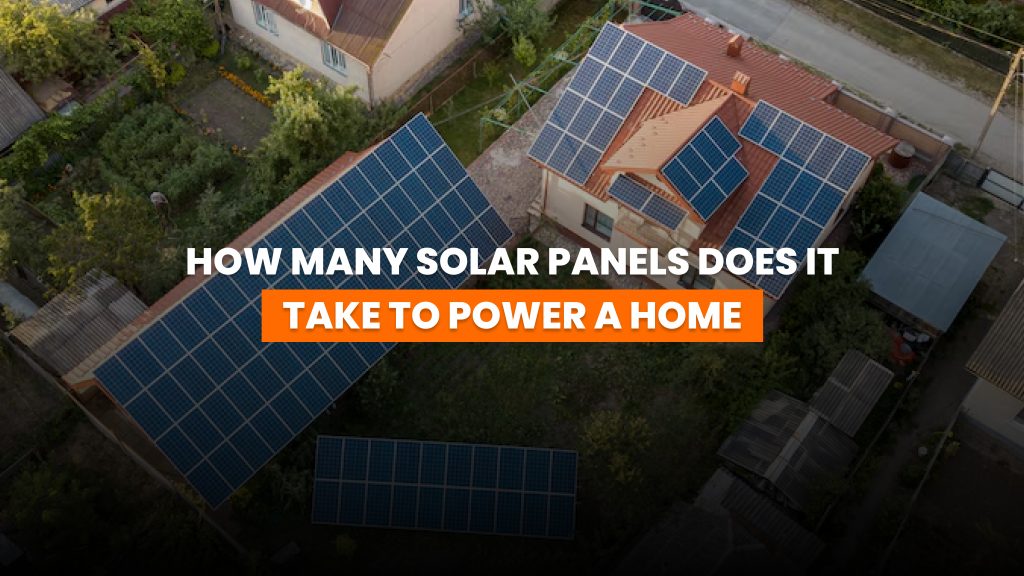Solar power isn’t just a clean energy choice—it’s a way to take control of your electricity costs and environmental impact. But one of the first questions homeowners ask is simple: how many solar panels do I need to power my house? The answer depends on several variables, including your electricity usage, local climate, panel output, and your energy goals. In this guide, we’ll walk through the calculations, considerations, and real-world examples so you can make an informed plan for your solar journey.
Understanding the basics: capacity and production
Before sizing a solar array, it helps to know a few key terms:
- Watt (W): measures power. A solar panel rated at 300 W can deliver that amount under optimal sunlight.
- Kilowatt-hour (kWh): a unit of energy equal to 1,000 watts for one hour. For instance, a 300 W panel producing peak power for four hours generates 1.2 kWh that day.
- System capacity: solar arrays are usually sized in kilowatts (kW). A 5 kW system has panels totaling around 5,000 W.
To estimate required panel count, you need to understand your home’s daily electricity consumption. The average U.S. household uses about 30 kWh per day, but this varies—smaller homes might use 15–20 kWh, while larger homes with electric heating or EVs could use 40–60 kWh daily.
Calculating solar production
The next step is to estimate how much energy a solar panel will produce where you live. This depends on peak sun hours—a way of measuring the total solar energy received over a day in equivalent hours of full sun. For example, New York averages 4.5 peak sun hours per day.
Here’s a simplified formula:
Number of panels = Daily kWh use ÷ (Panel wattage × Peak sun hours ÷ 1,000)
30 kWh ÷ (300 W × 4.5 ÷ 1,000) = 30 ÷ 1.35 ≈ 22 panels
This assumes ideal orientation and minimal shading. Adjust based on roof angle, shading, and seasonal variation.
Scenario: powering a house in New York
Let’s look at a realistic example for a family in New York:
- Daily usage: 30 kWh
- Peak sun hours: ~4.5 per day
- Panel choice: 350 W units
End result:
30 kWh ÷ (350 W × 4.5 ÷ 1,000) = 30 ÷ 1.575 ≈ 19 panels
So, a 6.65 kW system would meet their average need. With potential inefficiencies built in, installers might suggest a 7–8 kW system—about 20–24 panels.
Street-by-street and worldwide averages
Energy usage and solar conditions can vary widely:
- Smaller homes in milder climates (e.g., California) using 20 kWh/day might need only 12–15 panels (around 4.2–5.25 kW).
- Larger homes or those with EVs/heat pumps consuming 50 kWh/day may require 25–30 panels (8.75–10.5 kW systems).
Globally, solar adoption spans a range of system sizes. In sunny Europe or Australia, 4–6 kW systems are common; in colder climates or high-use U.S. homes, 8–12 kW is typical. At the utility scale, solar farms add hundreds of megawatts (MW) with thousands of panels.
Factors that affect panel count
System losses
Energy loss occurs during conversion—from DC to AC, through wiring resistance, panel degradation, and inverter efficiency. Allowing 10–15% losses is wise when sizing.
Orientation and tilt
Panels facing south (in the Northern Hemisphere) at the correct angle maximize production. East- or west-facing roofs may need 20–40% more panels to compensate for lower sun exposure.
Shading
Shade from trees, chimneys, or nearby buildings can significantly reduce output. A shaded section can lower the energy generation of the entire string, so services like micro-inverters or optimizers can help.
Future needs
Planning to install an EV charger or energy-hungry appliances? You may want to build in extra capacity to handle future increases in energy demand without needing new panels.
How long does it take to recoup your cost?
A solar payback period is how long it takes to offset your system cost through savings on your utility bill. For a 7 kW system costing $20,000 (after incentives like the 30% federal tax credit), generating 7,000 kWh per year at $0.15/kWh yields $1,050 in savings annually.
$20,000 ÷ $1,050 ≈ 19 years
In some states with higher electricity rates or better incentives, this timeframe drops to 8–12 years. Net metering policies—where utilities buy unused energy at retail prices—also accelerate payback.
System sizes summary
| Daily Usage (kWh/day) | Estimated Panel Count (300–350 W) | System Size (kW) |
| 15 (small home) | 8–12 panels | 2.4–4.2 kW |
| 30 (average home) | 18–22 panels | 5.4–7.7 kW |
| 50 (large home or EV) | 25–30 panels | 7.5–10.5 kW |
If you want occasional backup during power outages, pairing this with a battery adds reliability but requires additional investment and planning.
Taking the next step
- Calculate your daily usage. Review energy bills or use smart meter data.
- Estimate peak sun hours. This varies by location—Sunhub’s calculator can provide your region’s average.
- Choose panel models. Efficiency and space dictate power per panel, while aesthetics and price affect final choices.
- Allow for losses and future growth. Adjust upward by 10–25% depending on your goals.
- Evaluate financial returns. Understand payback time, incentives, and net metering.
- Design and quote. Let Sunhub or a local installer produce a tailored layout and cost analysis.
Final thoughts
Solar panel systems aren’t one-size-fits-all. Each home has unique energy use patterns, roof exposure, regional weather, and financial goals. A system big enough to deliver 30 kWh/day might need 18–22 panels, but that can vary widely. The key is accurate data, realistic assumptions, and planning for tomorrow—not just today.
A well-sized solar system powers your appliances, cuts monthly bills, and shrinks your carbon footprint. And as electricity rates rise, the long-term returns only get better.
Want to find out exactly how many panels you’ll need? Sunhub’s solar sizing tool is free to use, and our team can walk you through everything from selection to net-metering setup. Get ready to power your home with sunshine—on your terms.

